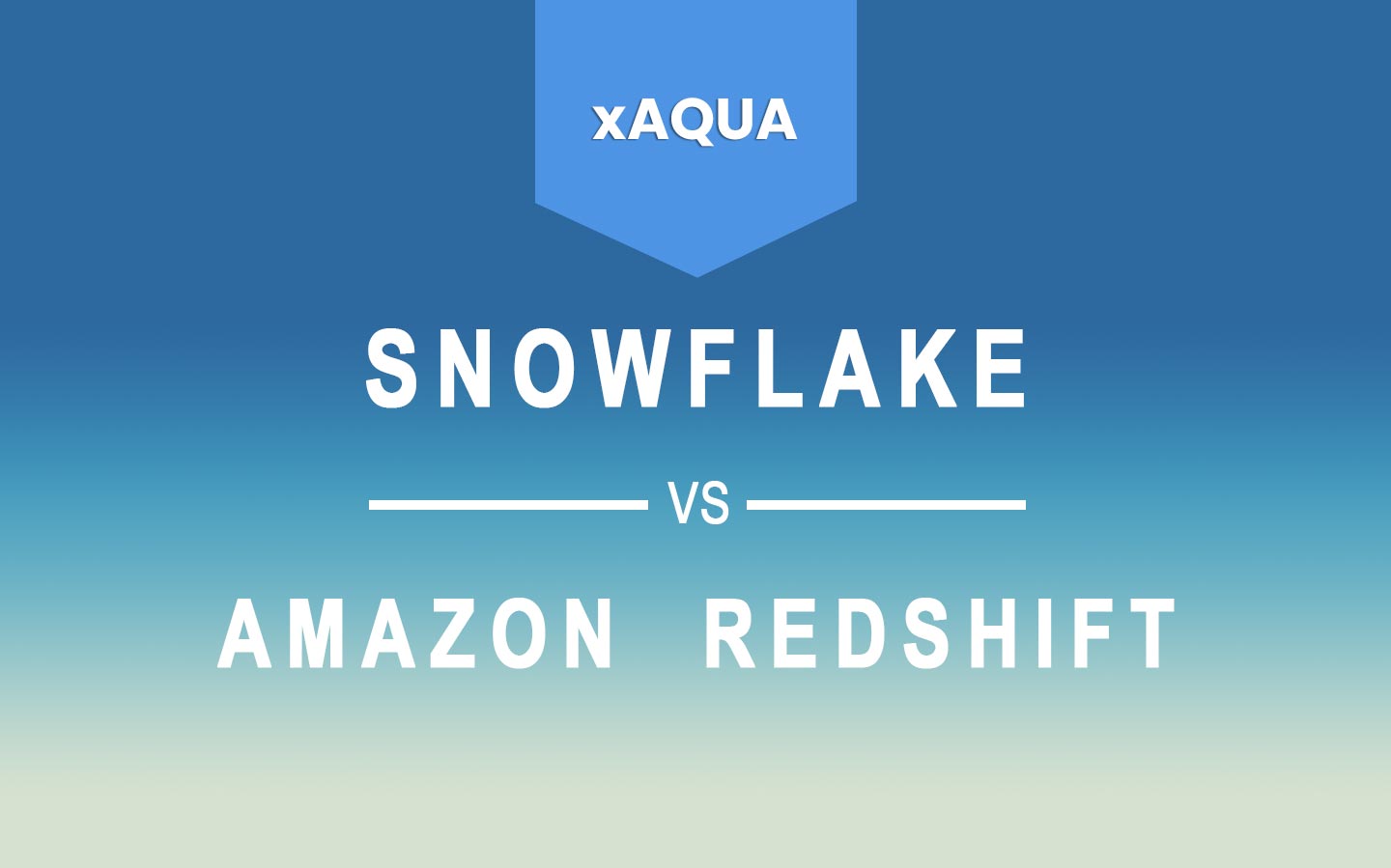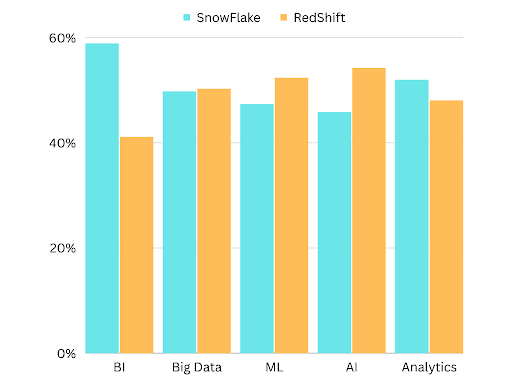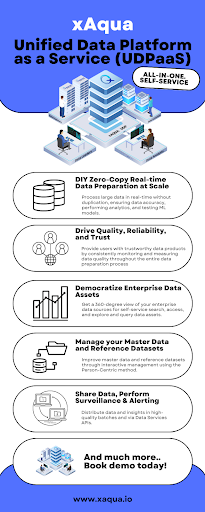
In the fast-paced world of big data, choosing the right cloud-based data warehousing solution is crucial for businesses to effectively monetize their data. Two of the most popular solutions you can hear about in the market are Snowflake and Redshift, with both offering their unique advantages and limitations.
There is a huge debate on ‘Snowflake v. Redshift’ in the market regarding the best cloud-based data warehousing solution. According to a report by 6sense, Snowflake is the leader in the data warehousing market with an 18.55% share, closely followed by Redshift with an 18.31% share.
Snowflake and Redshift are close competitors and have some key differences you should know. Snowflake is ideal for analytics-driven enterprises with complex queries and data-sharing needs, with a focus on security. Meanwhile, Redshift (powered by Amazon Web Services) is cost-effective and excels at handling large data volumes, with flexible pricing options and easy integration with other AWS services.
Comparing the market share of Snowflake and Redshift in different sectors:

Source – Snowflake v. Redshift Market Share
Both are good options, but in the quest for the best data warehousing solution, creating your own data stack can be a time-consuming and expensive process. This is where xAqua comes in: xAqua is a unified data platform that offers businesses an all-in-one solution for their data management needs.
In this article, we will dive deep into the debate of Snowflake v. Redshift and look at the key differences between both. We will also discuss how xAqua can be a better solution for businesses looking for a comprehensive and unified data platform. But first:
When it comes to data warehousing, the choice between Snowflake and Redshift depends on your business requirements.
From an architecture perspective, if your business needs are heavy on the computing side, Snowflake’s cloud-native architecture with elastic computing infrastructure is the best choice.
On the other hand, if your requirements are storage-heavy, Redshift’s distributed architecture with nodes dedicated to storage is a better fit.
Deployment-wise, both cloud-based solutions offer easy integration with other cloud platforms.
However, Redshift is powered by Amazon Web Services (AWS), and it integrates seamlessly with other AWS services, making it an ideal option for businesses already using AWS infrastructure.
In terms of structured and unstructured data, both Snowflake and Redshift support structured data, but Snowflake has the added advantage of handling semi-structured and unstructured data natively.
When it comes to scale-in and scale-out, Snowflake offers better scalability as it can scale horizontally by adding more compute instances. Conversely, Redshift scales vertically by adding more nodes with more storage and processing power.
Flexibility of use is another factor to consider. Snowflake offers the flexibility of using different compute instances for different workloads, whereas Redshift has a more rigid architecture.
Finally, in terms of manual overhead, both solutions require some level of manual overhead, but Snowflake has a more user-friendly interface and offers better automated processes, making it easier to use.
Both Snowflake and Redshift offer flexible pricing models based on usage, with Redshift being known for its cost-effectiveness.
However, Snowflake’s pricing model is more transparent and offers better control over costs. Snowflake prices its data services with 7 variants starting at $2/hour and separate computational pricing at an average cost of $0.00056 per second.
In terms of storage costs, Redshift is more cost-effective. Redshift’s pricing is determined by the total number of hours and clusters and calculated by multiplying the cluster size with the standard hourly pricing.
While Snowflake’s compute pricing is more competitive, the cost-effectiveness of each solution depends on your business needs and usage patterns.
When it comes to query processing time, both Snowflake and Redshift offer excellent performance.
Snowflake’s architecture allows for parallel processing, resulting in shorter query processing times. Redshift, on the other hand, uses a columnar data storage format, allowing it to quickly process large datasets.
Snowflake has a slight edge in terms of time to insight, as it can handle complex queries faster and offers better data-sharing capabilities, making it easier to collaborate and share insights across teams.
Both Snowflake and Redshift require some level of manual overhead, such as managing data partitions and configuring data pipelines. However, Snowflake offers a more user-friendly interface and better-automated processes, making it easier to manage and operate.
According to a post by Integrate, Snowflake has better automated maintenance than Redshift, which requires more manual intervention. Hence, Snowflake requires much less manual overhead compared to Redshift and is a more automated solution.
Both Snowflake and Redshift have strong security features, but Snowflake’s multi-layered approach to data protection gives it an edge in this area. Snowflake offers end-to-end encryption, with data automatically encrypted at rest and in transit. Additionally, Snowflake allows users to set granular access controls and audit trails to track data usage.
Redshift also offers several security features, such as encryption and access controls, but some users may prefer Snowflake’s more comprehensive approach to security. Ultimately, the level of security needed will depend on the specific needs of the business and its data.
Source: Youtube
While Snowflake and Redshift are popular data warehousing solutions in the market, they often require additional tools and services to fully address an organization’s data management needs.
For example, businesses may need to use separate ETL tools, data lake solutions, or data pipeline services alongside these data warehousing solutions. This can result in a complex and costly data stack requiring significant manual overhead.
xAQUA® UDP is a unified data platform that simplifies enterprise data and analytics challenges by providing tools and technologies for data management, analytics, and collaboration. The platform aims to address common challenges related to time, cost, quality, trust, and risk that businesses may face when dealing with large amounts of data.
xAQUA® also emphasizes the importance of democratization and collaboration by providing a central place for teams to work together and establish a data-driven culture. Overall, xAQUA® UDP offers a comprehensive solution for businesses looking to manage their data more efficiently and effectively.
When businesses attempt to create their own data stack, they often face several challenges. First, integrating multiple tools can be a difficult and time-consuming process, requiring skilled resources and technical expertise. This can be particularly problematic for smaller organizations with limited resources.
In addition, scalability can be an issue with a DIY data stack, as businesses may use more resources than necessary to manage their data. This can lead to increased costs and slower processing times.
Another challenge is ensuring data quality, particularly as the volume of data increases. Without proper tools, it can be difficult to effectively manage and maintain data quality, leading to inaccuracies and inconsistencies.
Finally, getting insights from data can be time-consuming, particularly if businesses lack the tools and processes to effectively analyze and interpret data.
A Complex Journey: Building A Modern Data Solution With A Modern Data Stack takes a deep dive into the shortcomings of the DIY approach to building a data stack.
xAqua takes a solution-centric approach to data management, offering a unified data platform that provides businesses with an all-in-one solution for their data management needs. Unlike a DIY data stack, xAqua is designed to be easy to use and deploy, with no technical expertise required.
The platform is built with scalability in mind, enabling businesses to easily manage large volumes of data without worrying about resource constraints. In addition, xAqua provides built-in data quality controls and data validation, ensuring data accuracy and consistency.

xAQUA UDP is an all-in-one modern data platform that enables efficient monetization of data assets via democratization and collaboration. It provides a holistic approach to integrate, share, analyze, and manage enterprise data assets via self-service and collaboration, promoting a data culture across the organization.
With xAqua, businesses can benefit from several key advantages, including:
#1. Improved efficiency: By consolidating data management tools into a single platform, xAqua enables businesses to save time and increase efficiency, reducing the need for manual data management tasks.
#2. Enhanced data quality: With built-in data quality controls and data validation, xAqua helps businesses maintain data accuracy and consistency, reducing the risk of errors and inaccuracies.
#3. Greater scalability: xAqua is designed to be highly scalable, enabling businesses to easily manage large volumes of data without worrying about resource constraints.
#4. Faster time to insight: With powerful analytics tools and easy-to-use dashboards, xAqua enables businesses to quickly gain insights from their data, making it easier to make informed decisions.
#5. Lower costs: By consolidating data management tools into a single platform, xAqua can help businesses reduce costs and save money on IT resources.
#6. Data pipeline automation: xAqua’s data pipeline automation (DPA) means extreme reliability, performance, scalability, productivity, speed, quality, and trust to address growing complex data pipeline requirements for today and tomorrow.
#7. Deliver and share enterprise data assets as data products: xAqua enables businesses to deliver and share enterprise data assets as data products, while ensuring quality and trust.
#8. Data quality first approach: With xAqua’s data quality first approach, businesses can deliver accurate and actionable analytics with a certificate of trust, enabling deep observability of data quality and data profile in every step of their data preparation and analytics journey.
Overall, xAqua UDP can work with any data warehouse, making it a flexible and adaptable solution for businesses of all sizes and industries.
If you want to see how xAqua can help your business streamline its data management processes, we invite you to schedule a demo with our team.
Click here to schedule a demo today
Our experts will take you through the platform and show how it can help you monetize your data from day one. Don’t miss this opportunity to see the power of xAqua in action.
In conclusion, the choice between Snowflake and Redshift depends on your business needs, with both offering unique advantages and limitations. However, instead of spending time and money creating a data stack, your business can opt for xAqua UDP offers an all-in-one solution for your data management needs.
xAqua also eliminates the need for separate ETL tools, and data lake solutions, providing your business with a unified platform to manage your data needs. Ultimately, the choice between Snowflake, Redshift, or xAqua depends on your business requirements, usage patterns, and budget.